Understanding the Intersection of ABA and Autism-Related Anxiety
Autism spectrum disorder (ASD) presents a complex array of behavioral and emotional challenges, among which anxiety is notably prevalent yet often under-addressed. Applied Behavior Analysis (ABA) emerges as a scientifically validated framework that not only supports core autism symptoms but also plays a crucial role in managing anxiety. This article explores how ABA's principles are applied to reduce anxiety symptoms in children with autism, highlighting strategies, benefits, and current research that underscore its effectiveness.
What is ABA Therapy and Its Broader Role
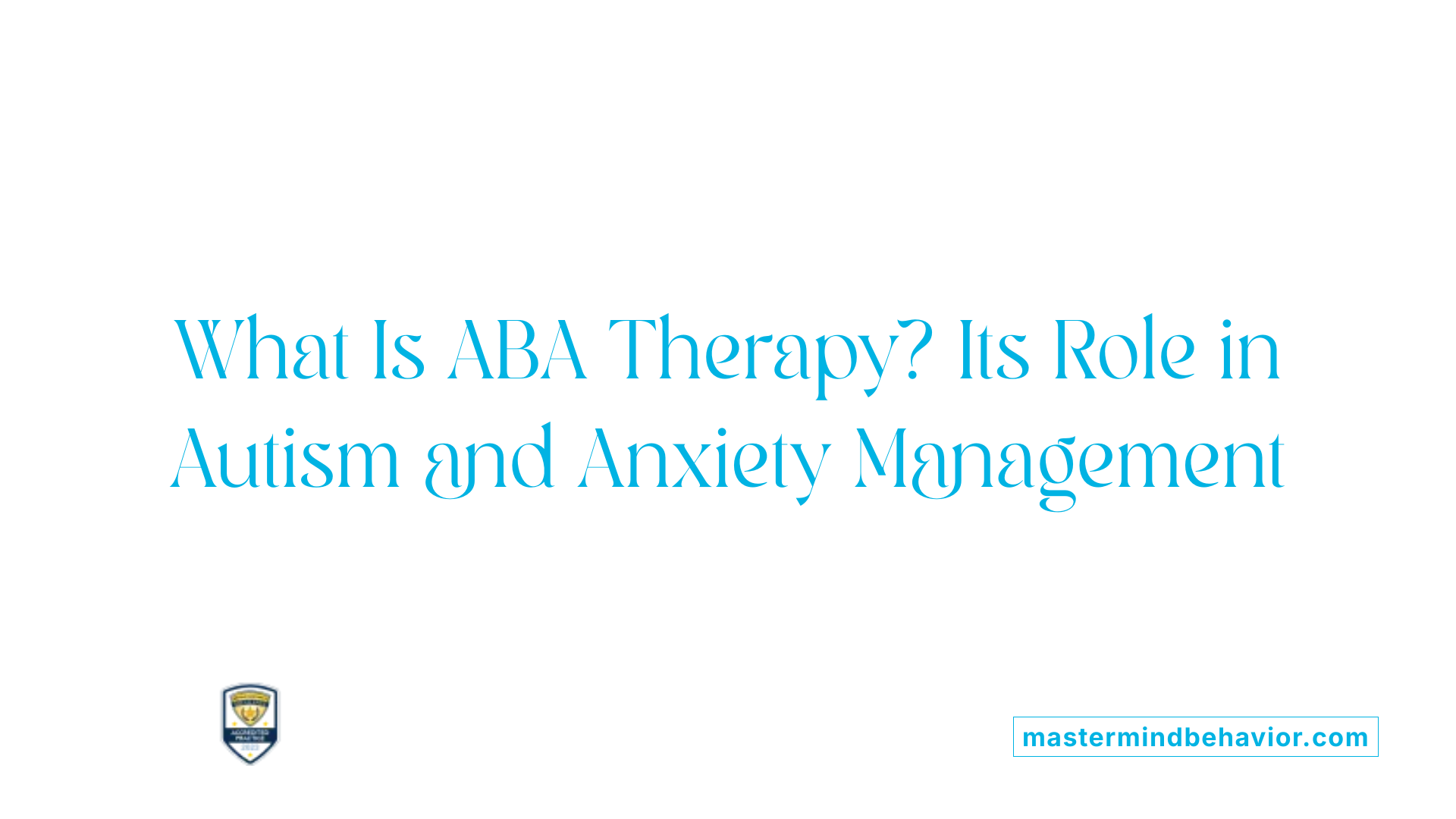
What is ABA therapy and how does it relate to autism and anxiety management?
Applied Behavior Analysis (ABA) therapy is a scientifically proven approach designed to improve socially meaningful behaviors in children, especially those on the autism spectrum. It employs core behavioral principles like positive reinforcement, systematic desensitization, and functional analysis to help children acquire essential skills.
In working with children with autism, ABA therapy focuses on enhancing communication, social skills, and daily living abilities. It also aims to reduce challenging behaviors such as tantrums or self-injury. While its primary application is for autism, ABA has proven effective in managing other conditions, including anxiety and OCD. It helps identify anxiety triggers, develop coping mechanisms, and teach children how to handle stressful situations more adaptively.
Modern ABA approaches emphasize tailored treatments that are play-based and less rigid, fostering independence and emotional well-being. These approaches involve creating step-by-step plans for challenging situations, training children with visual aids, and celebrating achievements to build confidence.
Overall, ABA therapy is a versatile tool that supports skill development and behavioral management, contributing to better emotional health and reduced anxiety in children with autism.
What principles underpin ABA?
ABA relies on key principles such as reinforcement, task analysis, data-driven decision making, individualization, and generalization. It integrates these principles into structured interventions that are continually assessed and modified based on progress.
How do modern approaches in ABA enhance its effectiveness?
Current methods include social skills training, systematic desensitization, and family involvement, all tailored to each child's unique needs. These innovations help children learn coping strategies, like relaxation exercises and visual schedules, which are crucial for managing anxiety.
What role does collaboration play?
Collaboration between therapists and families is essential. Active participation of parents ensures that therapy strategies are reinforced outside sessions. This teamwork can lead to lasting improvements in social interactions, reduce anxiety levels, and increase overall independence.
How ABA Therapy Reduces Anxiety in Children with Autism
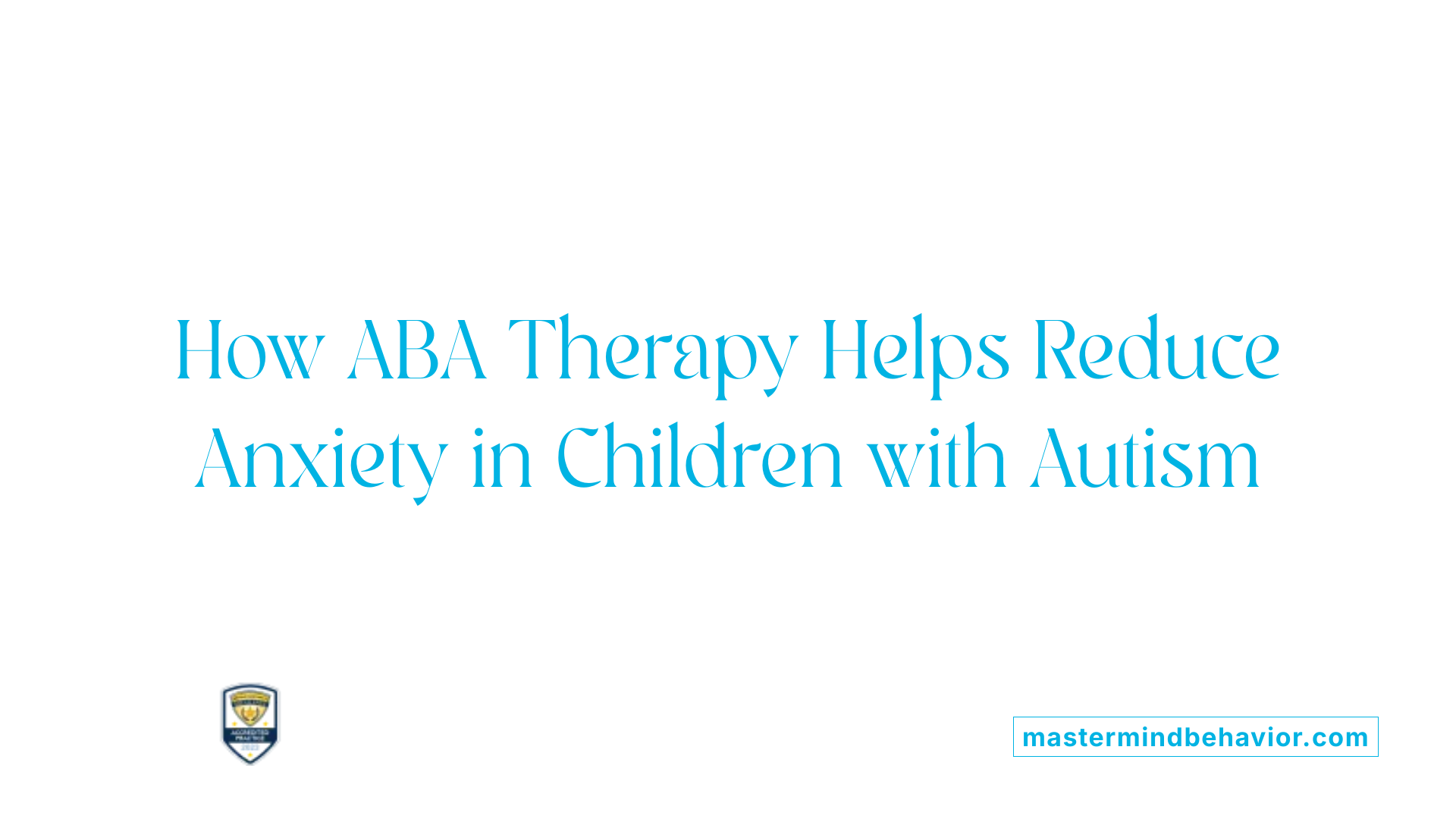
How does ABA therapy benefit children with autism in reducing anxiety?
ABA therapy offers effective strategies to help children with autism manage and reduce their anxiety symptoms. It begins with tailoring interventions to meet each child's unique needs, considering their strengths and challenges. Therapists develop personalized coping mechanisms, such as teaching relaxation exercises and emotional regulation techniques like mindfulness.
One core component involves systematic desensitization, where children are gradually exposed to anxiety triggers in a controlled, supportive environment. This gradual approach helps them become more comfortable with challenging situations over time. Additionally, behavioral techniques such as positive reinforcement encourage the adoption of adaptive behaviors and discourage avoidance or anxiety-driven actions.
Tracking progress is an essential aspect of ABA. Using data-driven decisions, therapists monitor how well interventions work and make adjustments as needed. This ongoing assessment ensures that strategies remain effective and relevant.
Beyond managing anxiety, ABA also emphasizes building emotional resilience and social skills. Social skills training helps children improve communication and peer interactions, which in turn lowers social anxiety. Techniques like visual schedules or social stories prepare children for new or stressful situations, easing their fears.
Overall, ABA's structured, evidence-based methods foster emotional growth, reduce anxiety symptoms, and promote greater independence and confidence, significantly enhancing the child's quality of life.
Types of Anxiety and Manifestations in Children with Autism
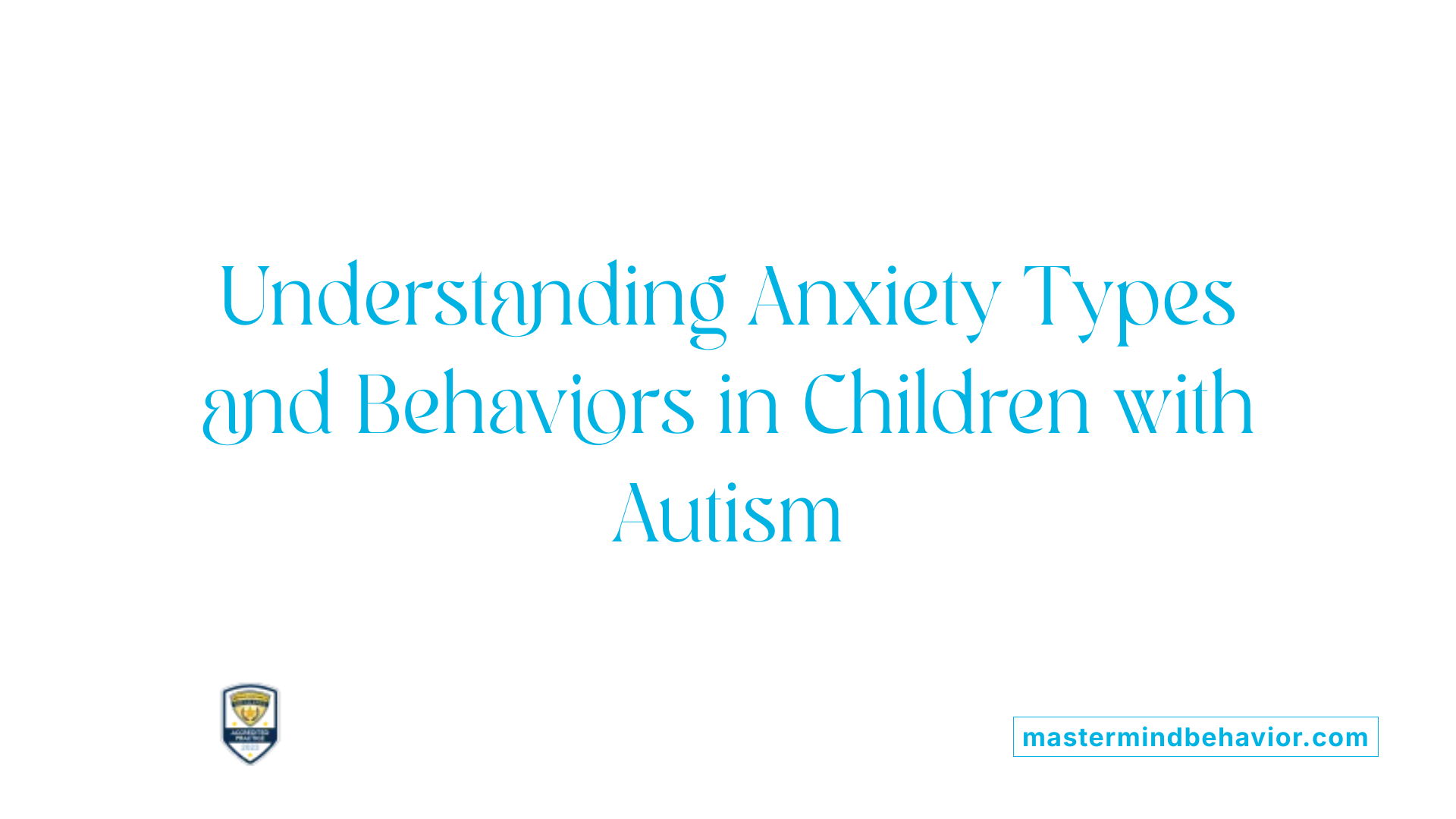
What types of anxiety are common in children with autism?
Children with autism frequently experience various forms of anxiety. The most common include social anxiety, separation anxiety, specific phobias, and generalized anxiety disorder. Social anxiety in autistic children often manifests as fear or discomfort in new social situations, which can lead to withdrawal or distress. Separation anxiety involves fears related to being apart from caregivers, resulting in clinginess or panic. Specific phobias might include intense fears of objects like animals or loud noises. Beyond these, many children display signs of over-arousal and sensory sensitivities, which heighten their anxiety symptoms.
How do these anxieties manifest behaviorally?
Children with autism often show anxiety through observable behaviors. These can include increased irritability, frustration, or withdrawal from social interactions. Repetitive behaviors may become more pronounced as a way to self-soothe. Physically, children may experience symptoms like stomach aches, rapid heartbeat, tense muscles, or difficulty sleeping. Recognizing these signs allows parents, teachers, and therapists to better understand and support children in managing their anxiety effectively.
Recognizing Anxiety Symptoms in Children with Autism
What are the signs and symptoms of anxiety in children with autism?
Recognizing anxiety in children with autism can be challenging, but certain behavioral and physical signs often indicate they are experiencing distress.
Behavioral cues such as tantrums, meltdowns, increased irritability, withdrawal from social interactions, and difficulty sleeping are common outward signs of anxiety. Children may also engage in repetitive behaviors or self-harm as a way to cope with their feelings.
Physical symptoms frequently associated with anxiety include rapid heartbeat, sweating, stomachaches, muscle tension, or headaches. These physical reactions can be indicators that a child is feeling overwhelmed or anxious.
Communication difficulties often make it hard for children with autism to verbalize their feelings. As a result, anxious children might respond with challenging behaviors like tantrums or meltdowns instead of explaining their worries.
Several common triggers can heighten anxiety levels. Changes in routine, unfamiliar social environments, sensory sensitivities, and transitional periods are significant stressors.
Early identification of these signs allows caregivers and professionals to implement calming strategies effectively and seek appropriate support. Understanding and addressing these symptoms can help reduce anxiety's impact and improve a child's well-being.
For more detailed information, exploring resources with the search query "Anxiety symptoms and signs in children with autism" can provide additional guidance and insights.
Supporting ABA and Anxiety Management at Home and School
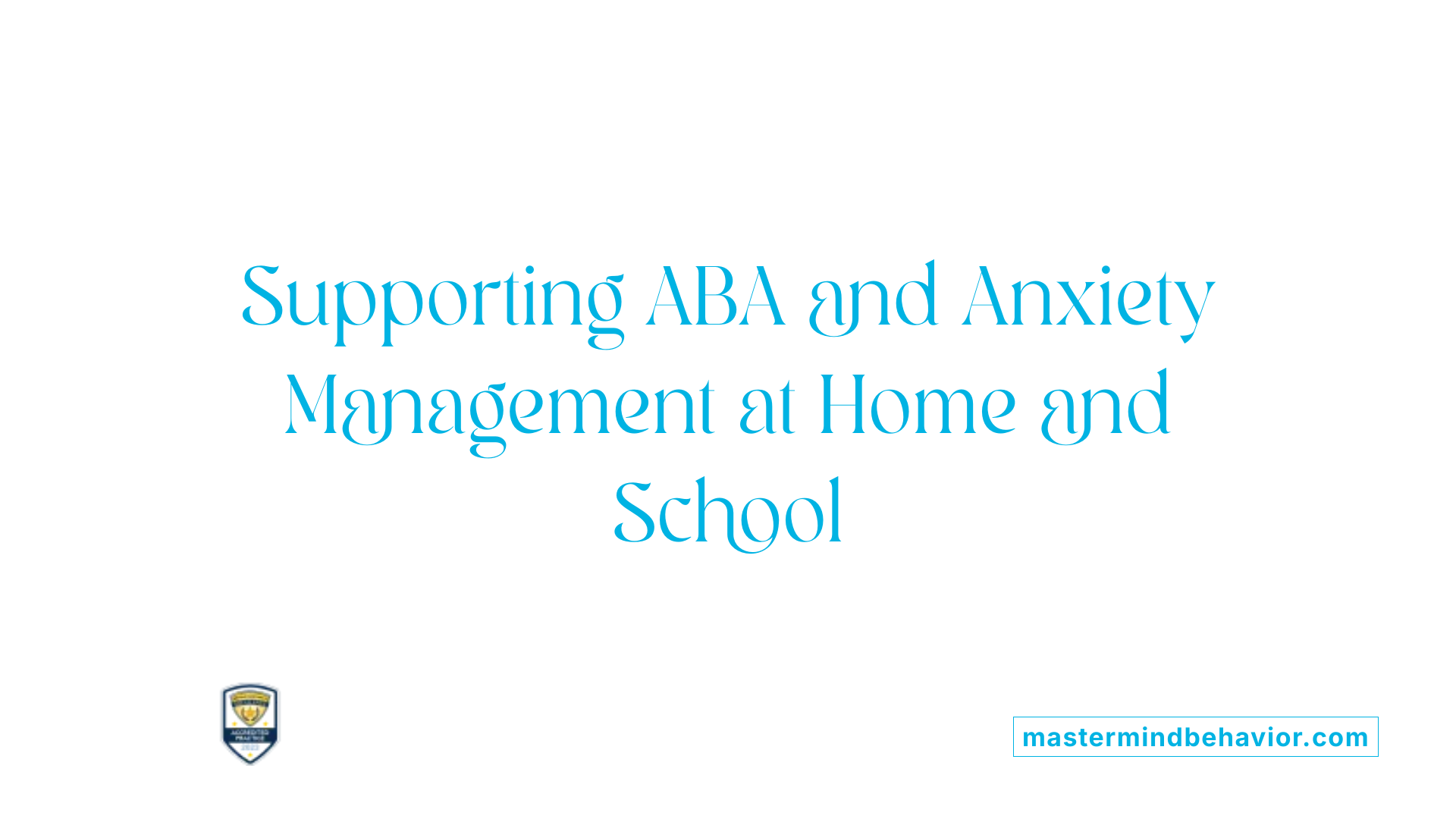
How can parents and caregivers support ABA therapy to help manage anxiety?
Parents and caregivers play a vital role in enhancing the effectiveness of ABA therapy for children with autism, especially when it comes to managing anxiety. Active participation in therapy strategies ensures consistency and reinforces learned skills.
Using visual aids such as schedules, social stories, and cues helps children understand routines and expectations, reducing uncertainty that can trigger anxiety. Establishing predictable daily routines offers a sense of security and helps children adapt more easily to changes.
Reinforcing coping skills taught during therapy — like deep breathing exercises, requesting breaks, or using noise-canceling headphones — empowers children to regulate their emotions independently.
Parent training programs integrated into ABA therapy educate caregivers on recognizing early signs of anxiety and responding appropriately. Open communication about feelings and encouraging children to express when they feel overwhelmed supports emotional resilience.
Creating a supportive environment involves maintaining consistent routines and offering reassurance. These approaches contribute significantly to reducing anxiety levels and fostering emotional stability.
Strategies to Use at Home and in School
| Strategy | Description | Benefit |
|---|---|---|
| Visual aids | Use visual schedules and social stories | Reduce uncertainty, increase predictability |
| Routines | Maintain consistent daily routines | Provide security and lessen anxiety |
| Reinforcement | Reward coping skills and positive behaviors | Encourage skill use and confidence |
| Collaboration | Work with therapists and educators | Ensure consistency across settings |
| Communication | Foster open discussions about feelings | Help children identify and express stress |
The Importance of Early Intervention with ABA
Why is early intervention important in applying ABA techniques for anxiety management?
Starting ABA therapy early is vital for addressing anxiety in children with autism. During early developmental stages, the brain exhibits high neuroplasticity, meaning it can adapt and change more easily in response to learning and environmental stimuli. By introducing ABA strategies during this sensitive period, therapists can effectively teach children coping skills and modify challenging behaviors before anxiety becomes deeply ingrained.
Early intervention allows for swift identification of anxiety triggers—such as social situations or unfamiliar environments—and the implementation of targeted coping mechanisms. For example, children can learn to use visual schedules, relaxation exercises, and positive reinforcement early on, helping them navigate daily challenges more confidently.
Implementing these techniques early offers long-term benefits. It supports generalization of skills across different settings, like home, school, and community, fostering resilience. Additionally, involving family members from the start ensures consistent reinforcement of skills outside therapy sessions.
Research shows that initiating ABA therapy early can significantly reduce the severity of anxiety symptoms, improve social and communication skills, and promote overall developmental progress. Consequently, early ABA intervention not only alleviates current anxiety but also lays the foundation for healthier future adaptations and increased independence.
In summary, early intervention harnesses neuroplasticity, promotes timely skill development, and supports children’s broader growth, making it a critical component in managing anxiety within autism spectrum disorder.
Research Evidence Supporting ABA for Anxiety in Autism
What research supports the effectiveness of ABA therapy for anxiety in children with autism?
Multiple studies and scientific reviews affirm that ABA therapy can effectively help children with autism manage anxiety. Systematic reviews, which analyze various research projects, and randomized controlled trials (RCTs), considered the gold standard in research, reveal positive outcomes when ABA principles are applied.
Research by Sofronoff and colleagues, along with other RCTs such as those conducted by Wood and team, demonstrated that tailored ABA interventions led to significant reductions in anxiety symptoms. These studies highlight improvements in how children cope with social situations, new challenges, and classroom settings. Techniques like identifying anxiety triggers, graduated exposure, positive reinforcement, and relaxation strategies were central to these positive results.
Additionally, combining ABA with modified cognitive behavioral therapy (CBT) enhances effectiveness. For children with high-functioning autism, interventions that include visual supports, family participation, and individualized reinforcement produce notable reductions in anxiety, according to recent trials.
While the field continues to seek more comprehensive and large-scale research, existing high-quality studies underscore ABA’s role as a practical and adaptable approach to decreasing anxiety levels and improving overall quality of life for children with autism.
Educational Resources for Parents and Teachers
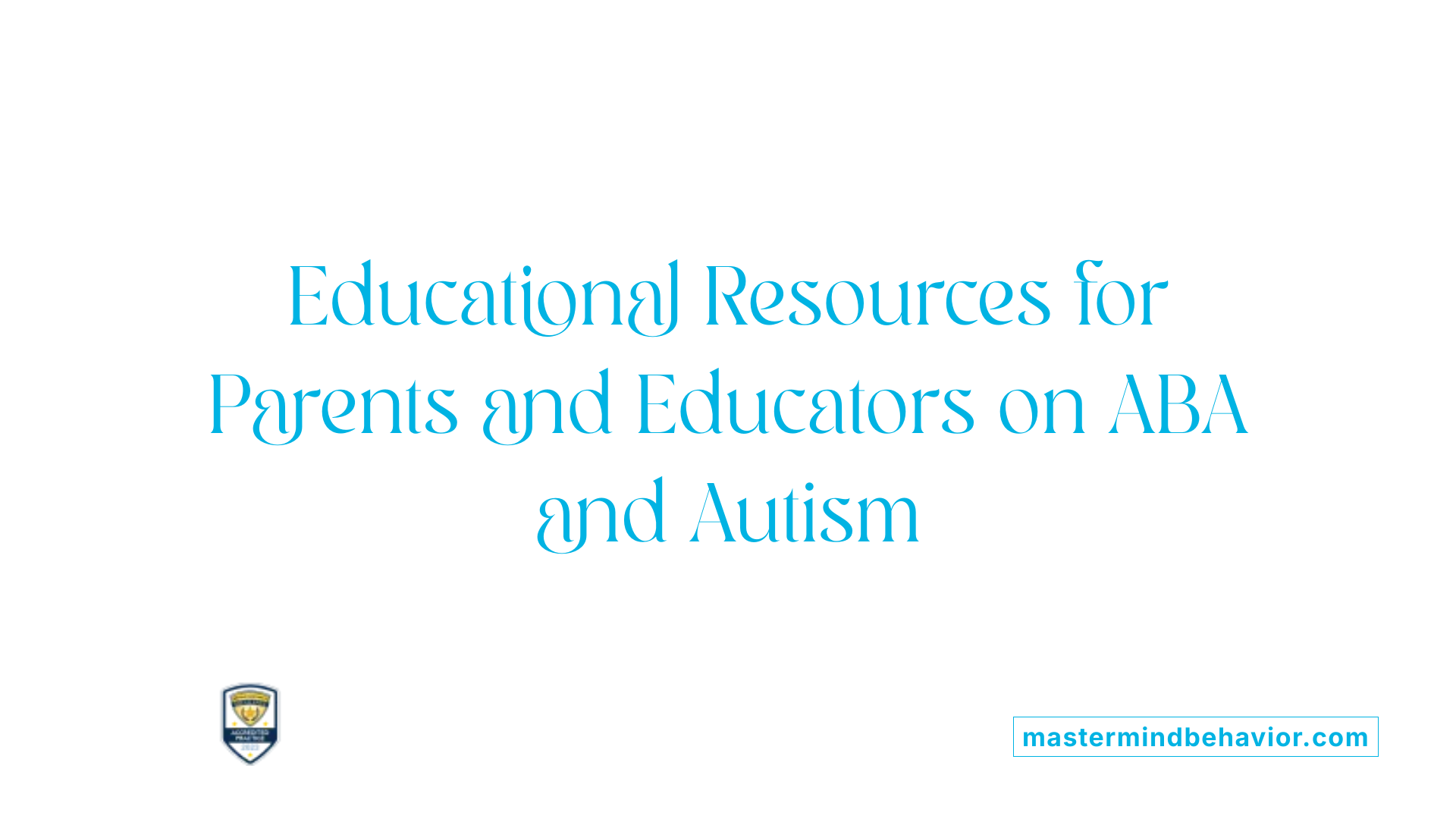 There are many resources available to help parents and teachers understand how ABA therapy can assist children with autism in managing anxiety. These educational tools include guides, online workshops, videos, and articles created by reputable organizations specializing in autism support.
There are many resources available to help parents and teachers understand how ABA therapy can assist children with autism in managing anxiety. These educational tools include guides, online workshops, videos, and articles created by reputable organizations specializing in autism support.
These resources often provide detailed advice on applying ABA techniques such as positive reinforcement, systematic desensitization, and social skills training to reduce anxiety symptoms. They also focus on supporting mental health across different settings, whether at home, in school, or during community activities.
A common theme across these materials is the importance of collaboration. Parents, teachers, and therapists are encouraged to work together, sharing insights to tailor interventions that fit each child's needs. This teamwork helps reinforce learned coping strategies and build a consistent support system.
Overall, the availability of these educational resources empowers caregivers and educators with practical knowledge and effective strategies, fostering better outcomes for children with autism experiencing anxiety.
Enhancing Lives through ABA-Driven Anxiety Management
The integration of ABA therapy in managing anxiety symptoms in children with autism holds immense promise. With its evidence-based, individualized approach, ABA not only helps reduce anxiety but also fosters overall social and emotional development. Early intervention, comprehensive caregiver support, and ongoing research continue to reinforce ABA's vital role in improving outcomes. As awareness grows and resources become more accessible, families, educators, and clinicians can collaborate effectively to empower children on the spectrum, paving the way for more confident, resilient, and engaged lives.
References
- ABA Therapy And Anxiety: What You Need to Know
- Autism and Anxiety: A Comprehensive Guide to How ABA Helps
- Autism and Anxiety: How ABA Therapy Can Help
- treatment of anxiety in individuals with autism spectrum disorders
- Importance of Early Intervention in Reducing Autistic Symptoms and ...
- Autism and Anxiety: Treatment Options and ABA Techniques
- Why Early Intervention Matters for Autism
- Early Behavioral Intervention for Autism - LittleStar ABA Therapy
- Treatment and Intervention for Autism Spectrum Disorder - CDC










